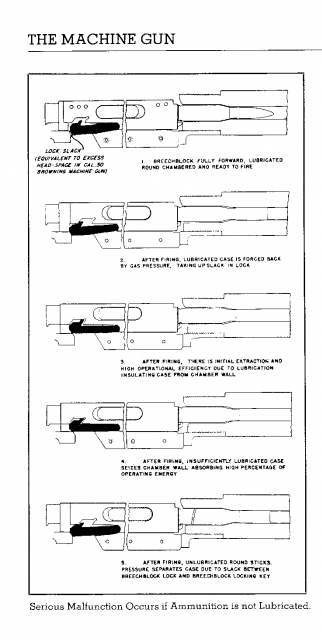Unfortunately what you reference only shows the distorting effect when authority figures initiate and perpetuate an Ordnance Department coverup.
This is the official in print version:
Arms and the Man, Editorial by Brig-Gen Fred H. Phillips, Jr, Secretary NRA
1921 The National Match Ammunition
Use of the national Match ammunition through the Camp Perry shooting season has amply demonstrated that, in the hands of intelligent rifleman, the “tin can†cartridge may be regarded as absolutely safe.
The fact that the National Matches closed without recording one serious accident in connection with the use of this ammunition seems to be a final and clinching argument, that when properly handled, no disastrous results may be expect. The only instance of rifles having been damaged-there were two out of the thousand-odd in use that suffered from “blow backâ€-were cause the presence of grease in excessive quantity and were the result of the shooter’s own carelessness. Fortunately the men who experience the blow backs were only superficially hurt. The lesion, however, in connection with the blow backs was plain.
Anyone who wants to go page by page through the Arms and the Man magazines, like I have, on Google Books, can read it for themselves.
IF the “tin can†cartridge may be regarded as absolutely safe. is not a
BALD FACE LIE by an active duty Army General, in print, in a national periodical, representing the Army's position in this matter, then I don't know what a lie is.

At some level we have to believe authority figures, no human knows it all . So I understand why people who don’t have enough of a background to recognize this as a cover up believe Hatcher's misdirection and General Phillip's lie. Given the gabbling through the decades the US shooting flock considers Hatcher's misdirection gospel, basic to their life, the foundation of their existence and meaning, (maybe over the top on that) but the whole problem of the tin can ammunition was the tin bonding to the case neck, creating a bore obstruction, and had nothing to do with grease.
And in that, I do know more than all of Frankfort Arsenal, Springfield Arsenal, and Dick Culver combined on greased bullets and the tin can ammunition.
However, Hatcher is more interesting. He had all the information, he was a participant in everything, he saw the greased Swiss bullets when he competed on the US rifle team in Switzerland , he went through WW2 as Chief of Ordnance and built over 100,000 20mm oerlikon autocannons that used greased ammunition, and yet, when it comes to greased ammunition and his book, it is all bad. Interesting to me, previous to the publication of Hatcher’s Notebook was Major Earl Naramore’s 1937 Book
Handloading.
http://www.castpics.net/subsite2/Cla...20-%201943.pdf . In the 1920’s , Major Naramore is a frequent contributor to Arms and the Man. He is a true expert ballistician, a truthful man, and I expect his 1937 book was written close to or after his retirement. And this is what Major Naramore says about the tin can ammunition:
Page 159
The ammunition made a Frankford Arsenal for the 1921 National Matches had bullets heavily plated with tin. This ammunition was satisfactory when first loaded. Tin has an affinity for brass and in this ammunition the tin combined with the insides of the case necks, forming a union between the bullet and the case just as though the bullets were soldered in place. This union is so strong that it is impossible to extract the bullets and if the ammunition is fired, dangerous pressures will develop. Most of this lot of ammunition, the only one so loaded, has been shot or destroyed, but anyone running across any of it should destroy it or preserve it only as a curiosity in the development of ammunition It should under no circumstances be fired. The marking on the case heads is, F.A. 21-R
What I find remarkable is that Hatcher, writing his book in 1947, did not acknowledge this and yet Hatcher was the illustrator of Naramore's book
Handloading!!!. Instead, in his book, Hatcher's Notebook, Hatcher discards all evidence that bonding between the bullet and case as the cause of the blowups, and repeats all the old, false, misleading theories about grease pinching the bullets.
Want to speculate about his motives?
I agree on that. That is exactly what Hugh Douglas did and wrote about it in the May-June 1985 issue of Rifle Magazine. He took five or six low number 03 receivers, held them in his hand, and with the nylon faced hammer in his other hand, hit them. They all shattered either through the receiver ring, the right receiver rail, or the rear receiver ring. All of them. And he shattered a double heat treat too!!
In another forum, a poster said that the Marine Corp sorted out their "good" from "bad" single heat treat receivers by hitting them with hammers. Those that broke, well it does not take an Einstein to figure they were bad.
I think the hammer test a good idea. Hit that single heat treat receiver and make it ring. If it breaks, post the pictures.
This one came cracked from the CMP:






 Reply With Quote
Reply With Quote





